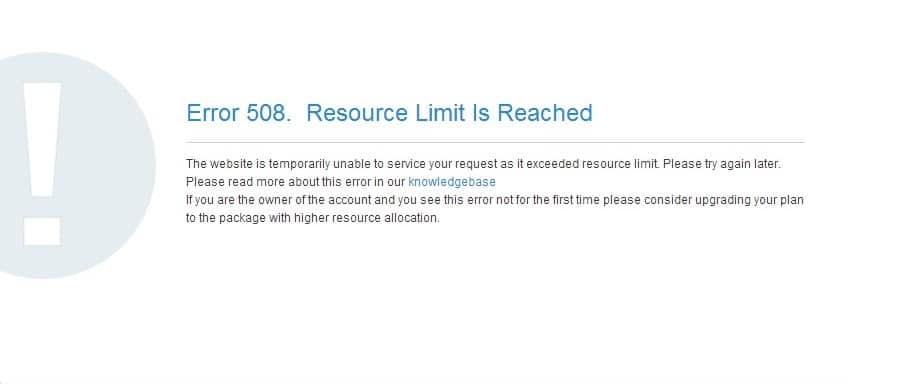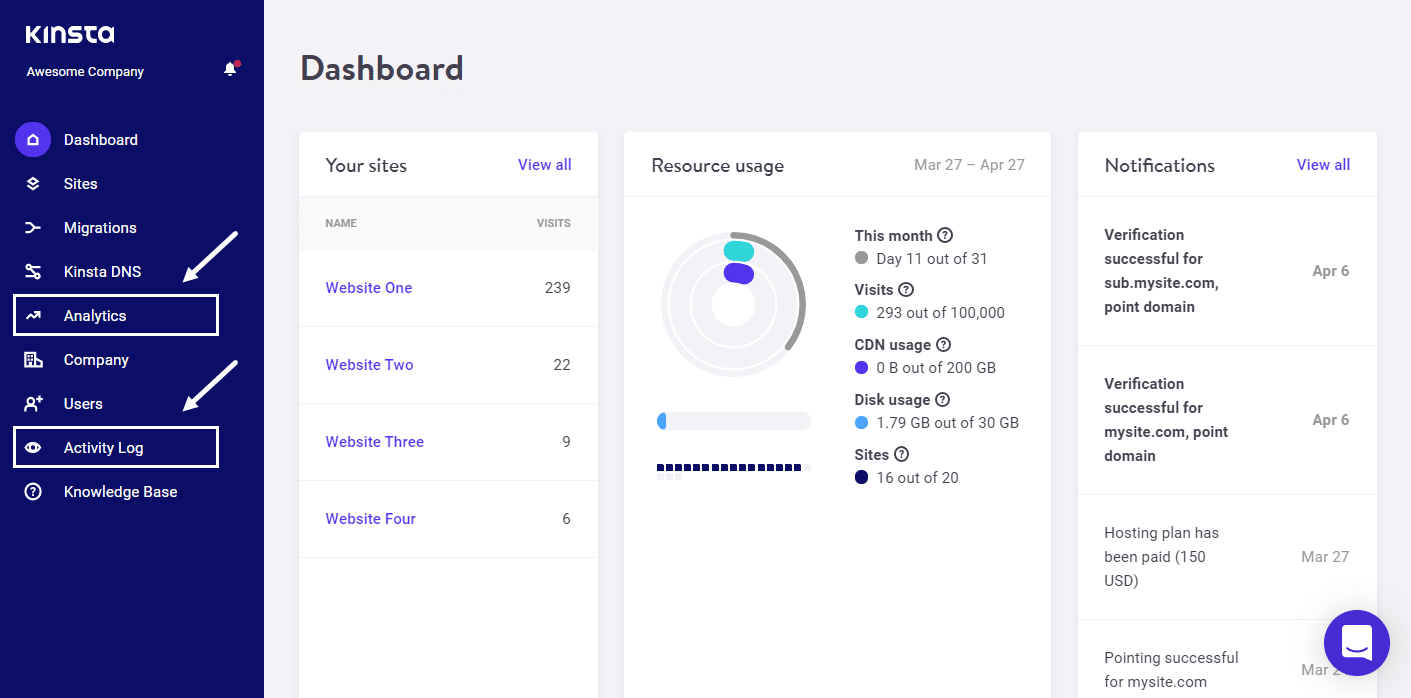Coming across “Error 508. Resource Limit Is Reached” can put you off balance. It’s not a common HTTP error, but it can make both your site and webserver inaccessible.
But fret not. This article will explain what the HTTP Error 508 is, how you can troubleshoot it, and the preventative measures you can take to make sure that it doesn’t occur again.
Let’s get started!
Check out the video version
What Causes the “508 Resource Limit Is Reached” Error?
Most web host accounts have set limits on resources. If this limit is breached, a “508 Resource Limit Is Reached” error is triggered, and your site will be temporarily inaccessible.

This error is triggered at the server level and can be caused due to various factors, including excessive strain on server CPU and RAM resources. It’s also commonly associated with a high demand for concurrent processes, often seen if your site experiences an unusually high traffic volume.
A spike in website traffic could also be the result of an attempted DDoS attack. In this instance, your site will trigger a “508 Resource Limit Is Reached” error once the available resources have been exhausted during the attack. However, you might not have to do anything to fix the issue!
If you consider this surge in web traffic to be a one-off event, then you might choose to wait it out and see if the traffic subsides.
If you’re on a shared server, or you’ve subscribed to an entry-level hosting package, it’s more likely you’ll run into this type of error. If that’s the case, you’ll need to raise the resource limits in the short term to get your site back up and running again.
How to Fix the “508 Resource Limit Is Reached” Error
When seeing higher traffic volumes than expected, your site can quickly exceed allocated resources, resulting in your server grinding to a halt.
Check Your Resource Usage
The first thing you can do to fix a resource limit error is to check your resource usage. Be sure to view server activity logs too. That’ll help in identifying the root cause of the problem.
If you’re a Kinsta customer, then you can view resource usage and activity logs quite easily.

Log into your MyKinsta dashboard and select the site you wish to view. You can view the resource usage via the Analytics menu and activity logs via the Activity Log menu.
There are additional tools and methods you can use to supplement this as well.
Bear in mind that the limits you see imposed on your site will be slightly less than the limits required to keep it running.
Why is this?
Let’s say your website is on a shared server, along with many other customers and their sites (bear in mind this wouldn’t be the case with Kinsta). As your site starts to attract more traffic, the server that hosts all these many websites, including yours, is processing more and more requests to accommodate your growing traffic.
If your popularity trend continues, the server will eventually hit its resource limits for every site it’s hosting, including yours. You can spot this trend early to prevent downtime. A good hosting provider keeps a watchful eye on the volume. Your web host should contact you to warn you that your site will go down if it continues to consume resources at a higher rate than your plan permits.
Check Internal Processes Running on Your Site and Third-Party Code
The cause of a “508 Resource Limit Is Reached” error may not always be external. Resources can be excessively consumed by one or more rogue processes running internally on your site, such as:
- Site backups
- Cron jobs
- Long or complex database queries
- A hacked site running a harmful script
- Third-party code
In the case of third-party code, this can often be down to a particular Content Management Solution (CMS) extension. If, for instance, you’re running WordPress and have one or more plugins installed that are regularly consuming more resources than are allocated, then you’ll run into 508 errors sooner or later.
To avoid such a situation, it’s advisable to keep your CMS extensions up to date. With WordPress, this means keeping your themes and plugins updated to the latest versions.
If no update has been available for a particular theme or plugin for a while, then consider discontinuing using it in favor of a similar, more recently updated product or contacting the author to check if a new version is imminent.
Deactivate All Your Site’s Extensions and Enable Them One by One
It could be that one of your CMS extensions is consuming more server resources than it should—in which case you should try disabling them all. If the error vanishes, then your suspicion is confirmed—an extension is a culprit.
Begin by deactivating the site’s extensions.
Once all extensions are deactivated, reactivate them one at a time, retesting your site each time to identify the culprit. Your next course of action should be to contact the extension author to report the issue. If the extension is well maintained, its author should get back to you with a workable solution.
Deactivate Your Child Theme
Finally, if you’re using a WordPress child theme, you should check the changes that have been made to it to see if they could be causing any issues. You can quickly test this by temporarily swapping to the parent theme.
Contact Support
If none of those above ways helped you pinpoint the cause of the increased resource usage, you should contact your web host’s support team and ask them for more detailed information. Kinsta’s support team is available 24/7.
Preventative Measures
It’s a good idea to keep one eye on server resource usage as a preventative measure. It will give you a chance to get ahead of any potential issues that could bring your site down.
Self-maintenance is a sensible approach to helping keep hosting costs under control as your site grows and matures while simultaneously making sure your site’s downtime is minimized. Ideally, you’ll want to stay well below the allocated resource limit to reduce the risk.
Many add-on applications can help you keep track of your site’s usage. An application performance monitoring tool (like Kinsta APM) should be a top consideration when deciding how to keep watch over your site.
If you’re running any promotions or marketing drives, then expect and prepare for increases in site traffic. It can help to understand how your hosting provider counts visits to your site. In most cases, you won’t necessarily see a massive spike in traffic, but it’s still sensible to try and predict whether you’re likely to run close to your limits.
Additionally, make sure that your contact details (phone and email) are always up to date. That way, you won’t miss any resource usage alerts.
For peace of mind, we recommend investing in a dedicated webserver, or—barring that—a higher allocation of initial resources, such as with Kinsta’s disk space add-on. Having this flexibility will cost more, but the chances of your website going down will drop to nearly nothing.
Summary
When your site hits a “508 Resource Limit Is Reached” error, it can be challenging. You’ll want to get things back up and running as soon as possible. To prevent this error from happening again in the future, you should:
- Fix the current issue by checking what’s causing the high resource usage and
- Raise your site’s resources limits to take into account future growth and traffic as well
For more, check out how Kinsta does things differently with our powerful cloud infrastructure and isolated software containers for each site.


